Many dogs just love playing tug-of-war games. Of those who don't, most can be taught to play and end up loving it. If a dog loves doing something, what should a clicker trainer do with it? That's right, use it as a powerful reinforcer for other behaviors!
There are plenty of myths and old wives' tales surrounding tug games with dogs. Some people maintain that tug games encourage aggression, biting, and "dominance." While it is true that playing uncontrolled tug games can lead to behavior problems, the opposite is likely when you play controlled tug games.

Apart from being a powerful reinforcer, controlled tug games also exercise your dog's body and mind, teach some important foundation behaviors (self-control, holding, and letting go of objects in the mouth), and provide a fantastic outlet for the innate drives within your dog. When you learn how to teach and play tug games, you learn how to combine aspects of canine ethology and behaviorism in a practical and fun way!
Getting started
Choose a suitable tug toy. To start with we'll use a clean rag. Actually, we'll use two rags; you'll find out why in just a moment.
With an uninitiated tugger, we need to incite a bit of prey drive. How do we do this? We make our rag act like prey would act. Would prey move towards a predator? No way! Prey always moves away from a predator. Your puppy is the predator, so make that rag move away from puppy and never towards. If prey started moving towards the predator, the predator might get a little intimidated and defensive, and we want to avoid that because it will end the game faster than anything.
Prey also likes to keep the predator guessing, so that the predator is unsure of when to go in for the kill. To do this, prey changes direction often-but always away from your domestic predator.
Some dogs will play this game with just the slightest wiggle of the rag, others demand you put a bit of energy and enthusiasm into it-so be prepared to work up a sweat. We can't do ALL our clicker training from the recliner during ad breaks on television!
Of course, your domestic predator needs to actually win this game and catch the prey to play tug-so make your prey act a little wounded and slow down just enough for puppy to pounce and take the rag in his mouth.
At this point you can click to mark the biting behavior, then pull the rag gently to encourage holding on. You don't want to yank the rag out of pup's mouth, you just want enough pressure to make pup fight to keep hold of the rag for a few moments.
Then drop the rag and pull the second rag out of your pocket. The first rag goes dead-all the fun evaporates out of the first rag. The second rag now starts to come alive. All the fun that was in the first rag has found its way into the second rag and is calling the pup to come and party!
At the instant that your dog drops the first rag, click and let him bite the second rag and play the tug game for a few moments.
Then drop the second rag, and pick up the first rag. Again, make the rag in your hand come alive and wait for pup to drop the other rag. As soon as pup drops the other rag, click and let him bite the rag in your hand.
Play the game in this fashion until your dog is reliably dropping the rag in his mouth when you wiggle the rag in your hand. This can happen in one session, or it could take several sessions. What do we mean by "reliably dropping the rag"? In five trials, pup drops the rag immediately at least four times when you wiggle the other rag.
This is a good time to add a cue, such as "give!" (note: if you are training for a sport, don't use the cue you will be using for that sport just yet). Just before you wiggle the rag in your hand, say "give!" Pretty soon pup will learn that when you say "give!" he lets go of the rag in his mouth.
"Give!" is a useful behavior for a puppy or dog to know. If pup steals your underwear out of the laundry-or your kid's homework (genuinely!)-it's very useful to be able to cue "give!" and have the item freely surrendered. Pup needs to learn that it's always worth dropping the object in his mouth quickly, and that there isn't always a rag in your hand being wiggled when you ask.
Your dog has very likely got the idea that he is to drop the rag in his mouth when two things happen together: 1. you say "give!" and 2. you have another rag in your hand. Now you want your dog to drop the rag whenever you say "give!" on its own.
Cue "give!" without another rag in your hand. If you're very lucky, pup will immediately drop the rag in his mouth, in which case you can click, pick that rag up, and play tug with it. If you're not quite that lucky, it's worth waiting for a count of five (silently). Chances are, pup will get bored and/or confused and drop the rag, in which case you can click and play tug with the dropped rag. If not, then cue "give!" again with another rag in your hand. Try again without the rag in your hand later.
Generalization: anything, anywhere, anytime
So far, your dog has learned how to tug a rag and drop it on cue. Now is the time to start introducing other objects-short lengths of hose, tennis balls, soft toys, squeaky toys, etc. You can also start playing this game in different places-different rooms of the house, front and back yards, at the park, on-leash in a car-park, outside your vet clinic, etc.
Every so often, instead of clicking and picking up the toy for a game of tug, click and treat with food, pick up the toy, wait a few seconds, then invite pup to play tug again.
A quick word on "latency"—performing the behavior quickly when asked
Some dogs won't respond immediately when you give the cue. For these dogs, it's worth investing some time early on to remedy this problem. Figure out how long your dog takes to respond to the cue; let's say it's four seconds. Give your dog five seconds to respond to your cue, and if he responds within that time, click and continue play. If he fails to respond within that time frame, end the game and try again later.
When your dog is reliably responding within five seconds in four out of five trials, reduce the time allowed to four seconds. Keep whittling down the allowed response time, second by second, until you have reduced it to under one second. Maintain that standard from then on. (For a more complete look at how to reduce latency, see Karen's November Letter on the concept of limited hold.)
Now that you have this fun game in your toolbox, think about how you might use it. Most dogs learn to really love playing tug, which makes it a great reinforcer for things like coming when called, or at the end of an agility run. If you compete in schutzhund, ring, retrieving, or flyball, think about how you can shape the "give!" into a reliable "out" or retrieve to hand.
Some dog owners have even discovered that playing tug can be an effective stress release for their dog during difficult training sessions, or at other times of stress.
Play by the rules, but above all, keep it fun!


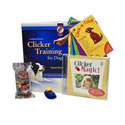
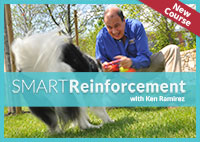
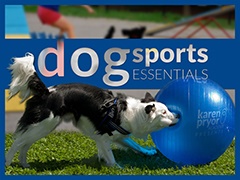
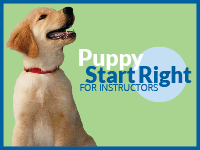
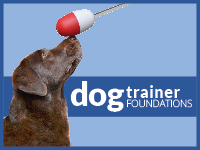

thanks!
I LOVE playing tug with my lab and golden... however.. i have always feel slightly guilty or embarressed, because i've heard from so many sources that this is a BAD idea... However, I stubbornly decided that if I didn't see bad results in MY dogs, then I could get away with it. How refreshing to hear that this is a commendable activity! My dogs are going to be soo happy!
click and treat...
Loved this article Aidan. All your advice is so practical. As Laura mentioned it is great to have something other then food as a treat. Here is my problem: when I started clicker training I was taught to ALWAYS pair a click with a treat...this was food because I have pugs and they are very food oriented. Now my three pugs enjoy playing tug with each other, so why not me and why not make it a treat. The girls were slightly confused by the the click marker when they grabbed the toy but Pablo is thoroughly confused. He is waiting for his food treat so he'll offer a sit or something like that. I think that the girls enjoy the game enough to make the transiton, but not sure about Pablo. He will watch us and then when I stop playing he initiates a game of tug with one of the girls. I know he likes it but do you any suggestions on how I make the game of tug the reinforcement?
Rita Ippolito
www.savagemermaidswildpugs.com
re: click and treat...
Hi Rita, honestly it would be easier to not use the clicker in this case. If it's not making the process more efficient, there is no need to use it and most dogs 'get' tugging if you make it lots of fun and keep the toy moving 'away from' the dog.
I actually don't use a clicker to teach this at all, but it's harder to explain how I use my body movement as a clicker than it is to tell people to use a clicker ;-)
Regards,
Aidan
http://www.PositivePetzine.com
Great Article!
Very nice article, Alden.
I think I will make it recommended reading for our clients.
Cheers,
Ron
I am responsible for my dog's success.
A few thoughts on Aidan's controlled tug article
Greetings Aidan.
Once again, my compliments on your article. Yes, some dogs will be so "into" the tug that a person won't have to leave the couch but others will need you to run and chase and even scream much like real prey would behave if caiught. Stay low to the dog and don't tower over them to initiate the tug of course this depends on the size of the dog but one really needs to stay low with the little guys. Don't be tempted to lift the dog off the ground and hold him suspended by the tug.
If you have a dog that likes to take the tug from you and run then start the process while he is on leash to help keep him close to you and focused on the tugging task. Don't pull the tug away from the dog so much but use more of a pushing the dog away from the tug once he has latched on to it. Firmly tap the dog on the flank with your open hand from side to side. Keep your hand high enough on the tug so as not to be accidentally bitten by the dog. As stated, the dog must feel like he is winning but the tug always ultimately belongs to you and you stop the game.
Maybe a rag is a good item to start with but so many large dogs especially labs like to eat rags, socks, towels etc. This can cause bowel obstruction and be deadly. Plus, how are they to understand what items of yours are off limits? Many neat options for tugs are out there for a person to try. I like to use a long tug of braided fleece strips...strong, not so hard on their teeth and easy to snake along the ground to create interest and it keeps my hands away from the dog's teeth.
I was never in favor of tugging with a dog especially if you have small kids that interact with the dog. A large dog can easily misinterpret the tugging with a child and overpower a child. Also, if you are to use your dog as a hunting dog a soft mouth is essential and tugging is not advised.
Hi Diane, thanks for the
Hi Diane, thanks for the extra tips. People definitely need to put some energy into this game with some dogs, you are so right. You've raised a couple of points I think I can address:
-- Plus, how are they to understand what items of yours are off limits? --
Good question! It's pretty obvious when you're playing tug, so it shouldn't really be a problem unless stealing your socks and knickers has been reinforced in the past.
The usual rules for teaching a pup not to steal stuff apply, and I think that provides ample discrimination training in this context.
But yes, with so many great toys out there, why not spend a few bucks on something ideal for the job?
-- Also, if you are to use your dog as a hunting dog a soft mouth is essential and tugging is not advised. --
Good point, I'd suggest teach soft mouth for retrieving and hard mouth for tug. My GSD has a crushing bite on a bite sleeve, but soft when she's carrying something. That's one of the things I love about being a clicker trainer - I get what I click!
Regards,
Aidan
http://www.PositivePetzine.com
Controlled tug continued...
I like to keep the tug separate as a favorite toy that only appears when the tug game is to start. That keeps it very special and very exciting because the dog is never sure when it will appear but is always delighted when it does come from out of nowhere. All other cloth things are off limits but the tug always suggests a wild and wooly game with great excitement.
I think tugging is great fun for the owner and the dog. I, too, had always heard that it causes aggression but I haven't found it to be true in the dogs I've worked with tug toys.
I think it can be a problem if handlers don't deal with other aggressive behaviors such as charging, not allowing food to be taken from the dog and biting. If these behaviors aren't properly addressed and then you add in a tug that isn't controlled then problems could develop with that dog.
Diane
Controlled Tug Games
Aidan, I very much enjoyed your well written article on the controlled tug. I have a few thoughts that I would like to add to it if I may? I agree with what you are saying but is it Ok if I add a few thoughts?
When I get home I will also respond to your interesting Flyball idea. Don't worry about not having trained for the sport because we can always have our eyes opened to a new or embellished technique. Every dog is different. Not every training technique works for each dog.
Diane
--I have a few thoughts
--I have a few thoughts that I would like to add to it if I may? I agree with what you are saying but is it Ok if I add a few thoughts?--
Certainly, I welcome the discussion :-)
Regards,
Aidan
http://www.PositivePetzine.com
P.S. :-)
>> We make our rag act like prey would act. Would prey move towards a predator? No way! Prey always moves away from a predator. Your puppy is the predator, so make that rag move away from puppy and never towards. <<
That needs to be in capital letters somewhere! So many times people tell me their dogs won't play with them, but they're too busy shoving toys in their dogs' faces to realize that they're making play obnoxious and unrealistic or even aversive.
One of the first things I learned from expert dog-play partners was, "The rabbit never jumps into the mouth of the wolf." My corollary to that is, if the rabbit moves toward the wolf, it's probably rabid and the wolf shouldn't want it, anyway! So the above advice is great. :-)
Laura &
We love tug!
I love playing tug because it's such an active behavior, great for physical exercise (for both parties, if it's a big dog!), and because it's so connecting -- you can't tug by yourself. Tug also exhibits trust (our version of the helicopter doesn't involve a collar or leash, just a sturdy toy) and partnership (we can't restart the game until you drop the toy). It's a great game.
It also makes a great reinforcer, as you say! People get so hung up on "click and treat," they forget that the "treat" can be anything the dog enjoys! Good reminder.
Laura &
Controlled tug
My dog is in training for Flyball. The dogs are taught a controlled tug and we don't have problems with aggression,
My problem is that my dog needs to remain interested in the tug once the ball is in the box. She needs to go and retrieve the ball from the box but the game can't end there she has to bring the ball to me and release it and accept the tug. She will seriously tug away until she sees the ball and go to get it but loses some of her drive back to me because she already has the prize (the ball). How can I use the clicker to correct this?
Diane
The Two Flyball Game - tugging isn't everything
Hi Diane, let's forget about "drive" for a moment and look at this as behaviour, operants. What we want is:
1. go out fast
2. collect the ball
3. return with ball as fast as possible
You've got everything except the 'as fast as possible'.
Note the "Limited Hold" used in the article. You can use this to get a faster return. Have her perform 10 trials. Record the time taken to return with the ball for each trial. Calculate the average time taken.
Now, get rid of your tug and use another ball instead. Remember we're training here, so we can use any reinforcer we like so long as it IS a reinforcer. You can toss a ball, or play tug with it or whatever she finds reinforcing. You might find food works as well as anything. You might even set up another flyball box! (Is that an original idea? I doubt it, but I'll claim it )
Perform another 5 trials (after 10 trials, you may need to do this in your next training session unless she is an unstoppable flyball addict). Reinforce only those trials in which the return takes less time than the average time taken. Toss the second ball, or give a treat, or let her hit another flyball box, or whatever reinforces this behaviour (i.e increases or maintains it).
When she beats that time 4 out of 5 trials, reduce the return time by 1 second. In the sessions that follow (5 trials to a session), only reinforce the returns that beat that time. When she beats that time 4 out of 5 trials in a session, reduce the time by another second.
If at any point you find that your rate of reinforcement drops too far, have a look at why? If there is nothing wrong, make the criteria a little easier to increase the rate of reinforcement for a session or two.
Following this procedure you should be able to find a maximum speed and get a reliable performance.
I should note that I am not a flyball trainer or competitor, so there may well be some points I have missed! But this is generally how you would increase speed. Forget about the tug if it ceases to be a reinforcer when she has a ball in her mouth.
Regards,
Aidan
http://www.PositivePetzine.com
Second Flyball Box
Hmmmm, a second box? Have you seen the sport? I have to think about that. I have considered throwing a ball in the runback but we aren't allowed to do that in competition.
Diane
Hi Diane, a second flyball
Hi Diane, a second flyball box or a second ball would need to be faded for competition - much the same as you would have to fade reinforcers out in obedience.
The point is that you MUST find a reinforcer or reinforcers. If tug isn't a reinforcer, it won't solve your problem.
Are you allowed to have a second ball on your person in competition? What about if you used a second ball in training, then just didn't throw it on competition day? How many runs do you have to do in a competition? If it's too many you might get ratio strain (or if you're really lucky, an extinction burst!)
Regards,
Aidan
http://www.PositivePetzine.com
Great article!
I am so glad to read such a positive article on tugging! I have been teaching my dogs to tug for years and so many of my students are horrified---sure it will make dogs aggressive! Tugging can be a fabulous energy burner, a great training reward and a bonding game for owner and dog. Well written article!!
Thank you!
Thank you for this article. My GSD has little to no prey drive, unless it's actually prey (like a squirrel or deer). I've recently been working on developing this drive in her, and you've given me some new ideas to try.
Post new comment